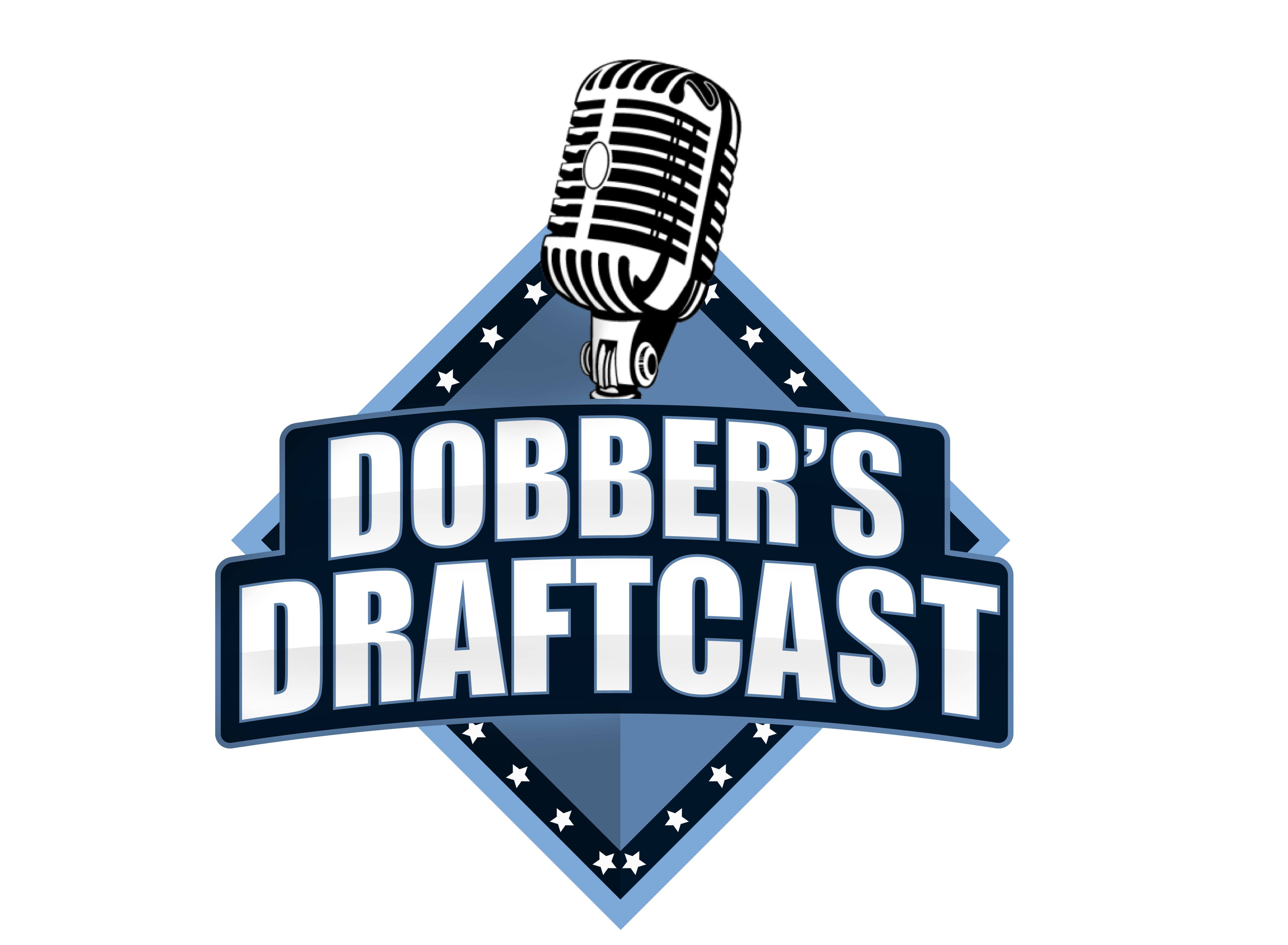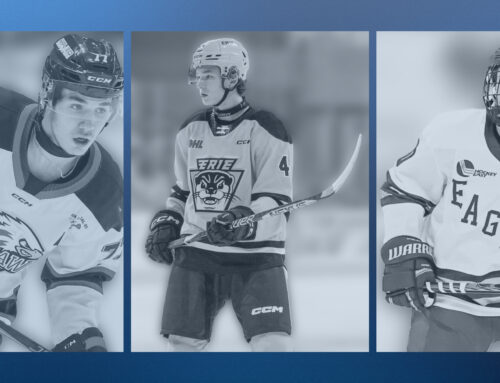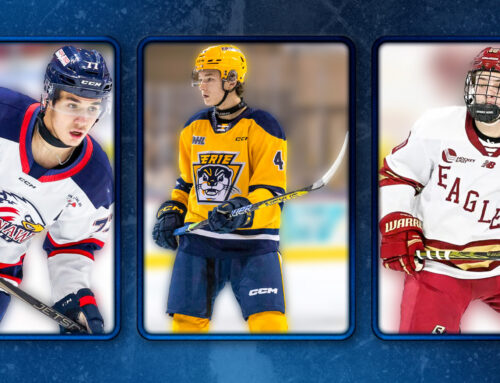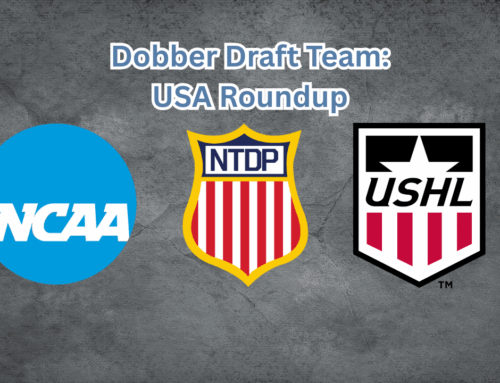Director’s Cut: How I’m Feeling About the 2025 Draft
Luke Sweeney
2025-06-26
While we fill out plenty of scouting reports, formulate rankings, and endlessly discuss and dissect players amongst ourselves, I feel like our opportunities to discuss the draft as a whole are far fewer. Especially as Director—as our rankings are done as a team—I feel I don’t often have the chance to give a sweeping, personal opinion on the class.
I’m looking forward to rectifying that.
In this article, I am going to go over the 2025 class in depth, providing some general observations and comparing the class to past drafts, as well as which players I am higher on, lower on, and with consensus on.
General Observations
The Top Tier is Top-Tier:
Especially early in the season, I think I let myself become infected with the poisonous attitude that surrounds this class. 2025 is a weaker class, for sure. However, while I’d initially let that sentiment carry over to the top of the class, I’ve changed my tune.
Until somewhat recently, I saw Matthew Schaefer and Michael Misa as bona-fide first-line players and potential All-Stars at their peak, though I didn’t see paths to becoming true Superstars.
With Schaefer, he has easily the highest potential in the draft. His skating ability, his newfound dynamism, and his late-August birthday paint a tantalizing picture of a player who is both very developed and possesses limitless runway. On top of that, seeing the huge strides he’s made in such a short time gives you plenty of reason for optimism.
Even so, I saw Schaefer closer to a Josh Morrissey or Zach Werenski career-wise, both Norris contenders and/or finalists at points in their careers. In terms of the level of prospect, I saw him as a slight step ahead of New Jersey Devils Simon Nemec and Luke Hughes at the times they were drafted, one of whom went second-overall, the other who was—at one point—arguably the top prospect in the NHL.
On the career side, Schaefer isn’t super stylistically similar to either Morrissey or Werenski. With his defensive upside, I also felt he could definitely become a better overall player than either of them. However, (and I still feel this way) expecting Schaefer to be more dynamic or to contribute more offensively than those two may be asking a lot. Morrissey has been over 60 points in all of the last three seasons, netting 76 and 69 in two of them. While Werenski hasn’t had the offensive support Morrisey has, he still potted 82 points this season and, with two 20 goal seasons from the blueline, remains one of the leagues best goal-scoring defenders.
In terms of comparable prospects, I now see him as a better prospect than Nemec or Hughes. Schaefer is more dynamic, more polished, and more offensively projectable than Nemec while coming with less risk taking and recklessness. He’s also a bit bigger.
In comparison to Hughes, again I see higher, more dynamic offensive upside and comparable defensive upside. Hughes has possibly the superior physical tools, but Schaefer is a more well-rounded player regardless.
Now, in comparison to other previously highly-touted defenders, Schaefer is a better prospect than Owen Power. Although, I think he’s still a shade below Dahlin who was seen as a potential franchise defenceman and—in my opinion—is one of the most underrated players in the league. While I still think Morrissey and Werenski are solid approximations of Schaefer’s career impact, Miro Heiskanen—a ~6-2 defenceman who uses his elite skating to play a two-way game, peaking as a top 10 defenceman in the NHL—might be just as apt of a comparison.
With Michael Misa, while I adore his style of play, I did have some concerns about his ceiling. His offensive stock absolutely increased this year, and his play in the OZ and in transition are very mature. However, I wasn’t convinced that, with that mature but in-system-oriented style of play he has, that Misa could become a truly dynamic superstar.
It had nothing to do with the tools. His skating, shooting and puckhandling abilities are all-high end, and I was certain that Misa would become a tremendously effective play-driver at the next level. Earlier, I saw Larkin/Suzuki/Hischier level career-wise, Carlsson/Fantilli prospect-wise. All still excellent players, just a step down from the top-talent of other classes.
Now, there’s a variety of factors for my change in feeling. Right off the bat, the historical data leaps out at you: there is no precedent for Misa’s level of offensive dominance in the OHL.
Over the past 20 years, you won’t find many OHL draft-eligibles scoring over 100 points or 50 goals.
Misa had 134 and 62.
Looking for players who approached this, the top comparables for Misa’s season is a short list: Marco Rossi (56 GP 39 G 120 PTS), Arthur Kaliyev (67-51-102), Mitch Marner (63-44-126), John Tavares (56-58-104), and Steven Stamkos (61-58-105).
While clearly there are players capable of scoring around a goal-per-game, and others capable of 120 points seasons, as you can see, nobody really ever does both. Misa’s ability to dictate offence in his draft year, as both a finisher and playmaker is something you usually only see out of generational talents.
Misa’s profile is also very different from all of these players.
He has a better frame, better tools, and is better defensively (though completely different) than Rossi, and with no injury concerns.
With Kaliyev it’s no-contest: Misa is more diverse offensively, more interior oriented, much better defensively, and just generally has much better tools (outside of the shot).
Compared to Marner, Misa has a worse team around him and is a better skater and shooter. Additionally, the two are very comparable defensively and you can expect a similar level and style of play in that regard.
Tavares—another Exceptional Status player—brought a lot of the same mature, projectable offensive approach out of Junior. However, both defensively and especially in terms of skating (Tavares’ No. 1 weakness) Misa looks stronger.
Finally, while Stamkos brought the higher level of dynamism and the NHL-elite shot, Misa, again, looks better defensively, has a more balanced offensive game, and projects better as a centre right away.
Clearly, Misa is keeping pace with some elite company.
When you look at recent first-overall selections, Misa again sticks out.
Bedard has the NHL-elite shot, the better hands, the better vision, and the otherworldly scoring, but Misa’s shot is still exceptional, he’s a better skater, is much better defensively, and has a more likely projection as an NHL centre.
In my view, Misa’s also better than Slafkovsky was in every meaningful area, except height and physicality. Lafreniere was a bit more dynamic in his draft year and maybe has better pure puck handling ability, though, again, I’d say Misa has an edge in every other category.
Celebrini is likely the best 1-to-1 comparison, though Celebrini is more intense, more physical, and has a more well-rounded defensive game. Where Celebrini is a Bull in a China shop, Misa’s a hot knife through butter.
At the end of the day, both in his Junior scoring and in his comparison to past selections, Misa looks like a genuine stud. For the reasons listed above, he’s not quite the prospect Celebrini is, but he’s not so far off.
The Fall Off:
While I have changed course on my projections for Misa and Schaefer, I have not changed my mind on the rest of the class.
Bottom line: the fall-off after Schaefer/Misa is steep.
Outside of those two, as I see it, there are only about 6 other players in the class with a legitimate chance of becoming an above-average first-liner or potentially a star player.
Outside of that, there’s about 3-5 other players with an extreme outside chance of developing into that kind of player. A number of these players will go outside the first round, and likely for good reason.
While there are a few others with top six/2-3 D potential, almost everyone outside lottery-range doesn’t project as more than a middle-six/second-pairing player at best.
If you’re a team near the end of the lottery, you should be looking to trade out of that range—either up or down.
The Monstars:
A lot of this draft skews heavily towards size.
A lot of that has to do with the draft’s strength. Perhaps lacking a better upside option, many teams will make do with a sizeable player who they feel is a safer option.
I also think that this is due in part to the emerging team-building model that favours massive, rangy defencemen (think Florida Panthers, Vegas Golden Knights, St. Louis Blues).
Nevertheless, it is a notable trend.
On NHL Central Scouting’s Final Rankings, 19 of their top 45 players from North America alone are over 6-2, 16 of which are over 6-3.
Time will tell whether this is the beginning of a new guard, a market overcorrection, or just an anomaly. For the moment, it’s an interesting trend to watch.
Who I am With Consensus On:
This section is for players where I seem to agree with the general outlook.
Initially, I was really pounding the table for Mrtka and, though I still like him a lot, his decision-making with the puck worries me at times. While I’m a big fan of his rush defence, his defensive play off the cycle and his level of physicality also need to improve. I saw him resembling prime Colton Parayko, and while I think the potential to be a high-end defenceman is still possible, the likelihood of him becoming a true No.1 I am less optimistic about.
Bear has been one of my favourite players in the CHL for the past two years. A relentless force, he was one of the players that defined what it was to be a Silvertip. With a red-hot start to the season, many outlets started to get on board as well. Though I think I am maybe slightly higher on Bear than consensus, the injury is worrying, and it forces me to push him down my list. If it wasn’t for the injury, I’d be comfortable taking him as high as 7 or 8.
Braeden Cootes and Brady Martin:
Often roped in together (like I am doing right now) outside of the pure intensity and physicality, they’re not really the same player. This has become especially clear as Martin has forced his way potentially into the top 10, while Cootes has not.
Cootes is a fantastic transition player with an underrated skill and shot combo. To me, he looks like a real transition and forechecking dual threat, even if the offence doesn’t translate (though I think it will). In short, I like him as much as consensus, though I think for a different reason.
With Martin, he also has some underrated skill and skating, but I don’t think he’ll be a transition guy at the next level. He’s relied upon a lot by Soo, but he needs more space behind the puck. Nevertheless, I think he’s more violent, more punishing than Cootesand I think also more of a true centre (though I also see both there going forward).
Who I am Higher On Than Consensus
With Hagens, it’s not so much that I disagree with the consensus view, (that this year was a step back and highlighted his potential limitations as a line driver) but more that I still think his profile is valuable—warts and all. It boils down to this: there’s few more skilled than Hagens, and with that in mind, I don’t see a good reason for letting him fall beyond 5.
I’ve been pushing this narrative all season. Ultimately, I think my stance on Potter is similar to mine on Hagens: he’s just too talented to ignore.
Earlier in the year, I definitely waved away a lot of the processing concerns, which I have begun to see as his most significant area of issue. He does need to learn to play in a way more predictable for his teammates and to manage the puck better.
But there’s just so much to like.
Potter’s a beautiful skater, and not in the way a guy like Antonio Stranges is, full of 10-2 skating and fancy footwork. Potter has a rare combination of truly explosive speed with unrivaled fluidity in acceleration. Think William Nylander. On top of it, his quickness, agility, and stop-and-start ability (which are arguably more important) are all very strong.
His shot pops off his blade, he has great hands that he can use in stride, and I think his hustle and defensive conscience are underrated.
Potter has the potential to make me look very, very silly, but from what I’ve seen, he has as good a chance at becoming a real star as anyone.
Sometimes you’ve got to take what you’re given. With Lakovic, I’m not sure there’s a point whinging about the power forward he could become: the game he’s got already is pretty damn good.
Lakovic’s another player who has incredibly fluid skating patterns and can dominate in transition, either with his straight-line speed or through using crossovers to create separation. His playmaking skill and the deception he uses to accomplish it is high-end, as are his shooting mechanics, which are strong enough to let him beat WHL goalies from mid-to-long distance. His 27 goals and 58 points in 47 games doesn’t jump off the page, but it stands out as exceptional when you factor in the quality of his team.
Look, he’s not a power forward and you can forgive the guy for being less-than-enthused on a team that won only 15 games. He has no issue making plays along the wall or to the net, and he wins back plenty of pucks. But he’s just not that player. If he gets into the hands of a team that’s ok with that, he could be a real stud.
I totally get it with Kindel.
He’s small, he’s not especially fast, and he’s not especially physical, while also not playing at a high pace to compensate for these things.
However, he always seems to have his fingerprints all over the game. His timing and reads are impeccable. Both his shot and net-front finishing ability are excellent. He can create plays along the wall and dictates the flow of play in the NZ and OZ.
Especially if he can add another layer of physicality or become more of a pest, I can see Kindel in a top six someday.
While the last few guys I’ve understood clearly why they’re not rated as highly, Zonnon’s a bit more of a head-scratcher: guys who are big and physically willing, who are both athletic and intelligent, and are committed to playing a projectable, net-driving game aren’t common.
Zonnon’s clear issue is the skating stride. However, both because of his athleticism and because of how obvious these technical issues are, I’m confident that he can correct this.
If so, he projects as a top nine/bottom six forward with multi-position and multi-situation utility. I’d be taking a long look at him in the top 20.
The talent was always obvious with Ekberg, which didn’t make his end-of-season explosion all that surprising. Although, it did answer whether his game could translate—and dominate—on North American ice.
Ekberg doesn’t have the B-games that the other two small forwards I mentioned do, but his skillset is comparable, and he had little opportunity to show it. He’ll be available in the second (if not the third or the fourth) and could easily be a steal.
Skvortsov is another one of the guys who I don’t get how there’s not more hype for.
He’s a 6-4, physically filled-out defenceman with explosive, powerful skating and a low, strong posture. He’s intense yet disciplined in his own zone. He’s engaged in the rush, but doesn’t force the issue or often over-handle.
He seems very projectable without a ton of work to do to round out his game, or at least the same or less than most of the 6-4+ defenders in this draft.
Moses was a player I really rooted for all year long, so dropping him in my rankings was hard. While he started off really strong in North Bay, I thought he settled into some bad habits, and his offence didn’t pop as consistently as it needed to.
Nevertheless, even if he doesn’t become an offensive contributor (which—with his shot, hands and vision—I think is still very much in the cards) his energy and checking acumen I think are strong enough to earn an NHL role.
Who I am Lower On Than Consensus
McQueen’s stock has definitely fallen post injury, but even before then I was deeply skeptical of his projection to the NHL.
My issues with him are numerous.
Production: The significant majority of his points came against Moose Jaw and Regina, two of the worst teams in the CHL. Otherwise, over the past two seasons, his scoring is average for a CHL producer. Below average even, when you account for the fact that he’s weeks away from being eligible last season.
Physicality: He chases hits recklessly, both in abandoning team structure, and in the sense that he hits in an awkward fashion. Considering his age, he’s also quite weak for his size.
Defence: McQueen was porous before the injury, and after it he looked too slow to stick with checks.
Skating: McQueen has good acceleration, but, in doing so, over-extends his back, which is obviously a huge issue with his injury history. His agility and ability to stop-and-start is also limited.
Puck Skill: His shot and hands (especially at his size) are tremendous. His deception with the puck and his off-puck game to find shooting lanes are not.
For me, despite the obvious upside, I would be scared of drafting him. Though it depends how you weigh the pros and cons of his game.
Pros: He’s among the draft’s best, most accurate shooters. Has high-end handling skill around the net and in tight to his body. Plays with physical willingness. Has strong-to-above-average top speed and acceleration for a big guy. And he’s 6-5.
Cons: He struggles to find space off-puck to use his shot. He has creativity but lacks deception in his attacks. (Despite having an Oct. ’06 birthday) He’s physically underdeveloped for his size and approaches physical confrontations recklessly. He’s poor defensively. To cap it off, he’s already had a major lower back injury in his draft year and uses skating mechanics that will likely continue to aggravate his lower back.
I’d be comfortable letting another team make a decision on McQueen.
Jake O’Brien and Caleb Desnoyers:
There are differences, but I see a lot of similarities between these two. As such, I think their strengths and weaknesses are similar.
With O’Brien, I was a big doubter. I thought his skating needed work, and I really didn’t like his shot generation. I’ve now come around. I still think he has kinks to work out, but I more clearly see the path to an NHL top six
That said, I don’t think he will be a playdriver at the NHL level. His skill and IQ combo is enough that (with some improvements to his skating, a more disciplined approach defensively, and using his shot more) he still could project as a top-sixer who ends up on the scoresheet a lot.
I feel similarly about Desnoyers, but I am more convinced by his physicality, defensive game, and play driving qualities, though less enthusiastic about his processing, creativity, and potential of becoming a big-time NHL point-getter.
I’ve had Desnoyers as high as 5 (especially when the physicality has been more consistent) but I’ve dropped him due to his offensive consistency, which I have issues with, even at the pace and degree of competition of the QMJHL level.
I don’t see as much planning in Desnoyers’ attacks. While O’Brien makes lots of creative plays at high pace, (and while Desnoyers also feeds the slot at a very high rate) I do feel like a lot of these attempts are just him painting himself into a corner, running out of options, and then slinging it to the net. Ultimately though—because of his defensive game and net-driving tendencies—I do think he’ll drive play and possession better than O’Brien and (despite not actually playing much of the position this season) fits better as an NHL centre.
While I’ve had my moments with him, all-in-all I’ve been low on Jackson Smith all season, especially early when he was consistently being ranked highly. If recent mocks are to be believed, the general view seems to be correcting towards my opinion.
The first thing to note about my criticisms is that while I think Smith is tremendously talented, as a defenceman, he has a style of play that I am not a fan of. I don’t like defencemen who lead the rush with their feet, or who sling tons of shots on net—two things Smith is very prolific at. So maybe take my feelings with a grain of salt.
My biggest issue with Smith however is that I simply disagree with many of the assessments of the type of player Smith is.
“Punishing Defender”: I see this a lot, and I don’t agree. He’s definitely 6-3. He definitely hits guys. I just think my idea of ‘punishing’ must be significantly different. I rarely see him engaged in proactive contact. He doesn’t deny the DZ blueline. He’s not physical enough in front of his net. I just don’t see it.
“Shutdown” or “Smothering” Defender: Again, Smith doesn’t deny the DZ blueline and, in fact, cedes it far too frequently. On rush defence, he doesn’t establish his angle in the NZ or use dot defence to stay in position, and often retreats rather than surfing to checks. He isn’t consistent at engaging his man in front of his net or staying within coverage. He also makes many bad turnovers. I see the argument that (in a smaller role) Smith will adjust into becoming a shutdown defender. That’s certainly possible, but I’d like to see it first.
“Elite Skater”: This might be nitpicking. To me, Smith’s top speed is average. Without a big head of steam, he can struggle to separate from WHL checkers with speed alone. His acceleration is solid, but I’m not convinced by his footspeed or quickness.
The 10-2 skating isn’t important to me. Sometimes its useful, sometimes it’s a gimmick, sometimes it’s a crutch. The fact that he uses this technique isn’t indicative of anything to me, one way or the other.
“High-end Transitional Play”: Ok, maybe this one is more of a paraphrase that a quote, though I do see this sentiment a lot.
Smith is a great transition player at this level. He is strong at gaining the offensive blueline with control, though the vast majority of these plays are skated entries. I explained in my article on O’Brien why I don’t put much stock in these plays.
Besides the fact that Smith rarely creates controlled transition plays off the pass, (a non-negotiable for defencemen in my book) I find his skated transition play to be particularly un-projectable. He often needs space or a head of steam, a luxury that will evaporate as he climbs the ranks. He charges headlong into set defences. He constantly gets painted into corners or loses the puck trying plays that aren’t there. But, more than anything, his transition plays are so frequently along the wall; he doesn’t gain the middle on his carried entries.
Smith is a great player and a first-round-calibre defenceman. That doesn’t mean he doesn’t have significant developmental hurdles to overcome.
That wraps up my long-winded explanation of my perspective on the 2025 NHL Draft. If you liked this article and would like more NHL Draft updates, make sure to follow me on X @SweeneyLuke17.






